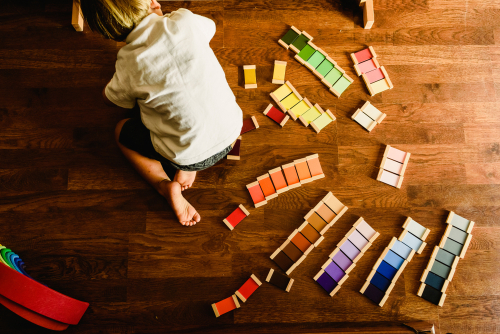Montessori education is highly recognized around the world for its unique approach in following how a child naturally learns. Created by Maria Montessori, this educational method encourages children to choose their tasks and decide how to take on challenges. Teachers offer guidance but let their students explore their creativity and learn from it.
But how exactly does a Montessori school promote playful learning?
Educational Structure
Unlike traditional teaching methods where teachers choose activities for students, educators in Montessori schools often let children choose their activities freely to promote a sense of freedom. The teacher still maintains structure within the classroom by guiding students towards established goals. This method promotes playful learning by letting a child choose what he enjoys but still providing structured ways like the choice of materials and the ways in which a child interacts with these materials.
The Use of Materials
In a traditional classroom, the teacher rarely uses materials that children can manipulate and only uses illustrations to teach students different things. This promotes learning through the eyes and ears. But at a Montessori school, the use of objects is highly encouraged for children to learn through play. For instance, a child can learn about shapes by offering him a set of objects in different forms. He can touch, trace and manipulate these objects to differentiate one shape from the other.
Montessori educators agree on eight three sets of materials that should be present in a Montessori primary classroom and it should cover areas of practical life, sensorial, language, math, science and geography, and art. According to studies, “learning is enhanced when it embodied across modalities,” and experts believe that there are benefits when the hands are involved in learning.
Interactive Learning
Educators in a Montessori school are keen on interactive lessons that help promote playful learning. While didactic teaching methods only promote interaction when a teacher asks questions, guided play lets a child explore a learning material with the guidance of the teacher. She can ask questions and communicate with the child to make his interaction with the material more meaningful and fun.
Montessori educators also promote interaction with the number of students they have in a classroom. Most lessons involve a group of two to six children, depending on their age.
Freedom Is Fun
In Montessori learning, the child’s interest is very important. Educators offer activities and objects to students sand let them choose how they want things to be done. To promote playful learning, a child is not forced to engage in an activity that he doesn’t want to do. If a child wants to tackle the activity in another way, the teacher follows his lead while trying to stay within the learning agenda.
Dr. Angeline Lillard defines the concept Montessori education perfectly: “The hands-on, child-driven educational methods sometimes referred to as ‘playful learning’ are the most positive means yet known to help young children’s development.” Play is, indeed, a crucial part of early childhood education and with playful learning now more recognized around the world, the future is definitely bright for our children.
Kid’s Town Montessori School is centrally located at 867 Sycamore Avenue in Vista, California and is proud to serve the cities of: Vista, San Marcos, Escondido, Carlsbad, San Elijo Hills and many more

